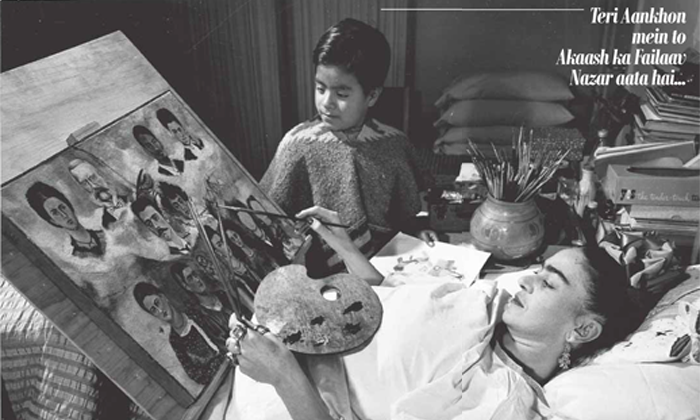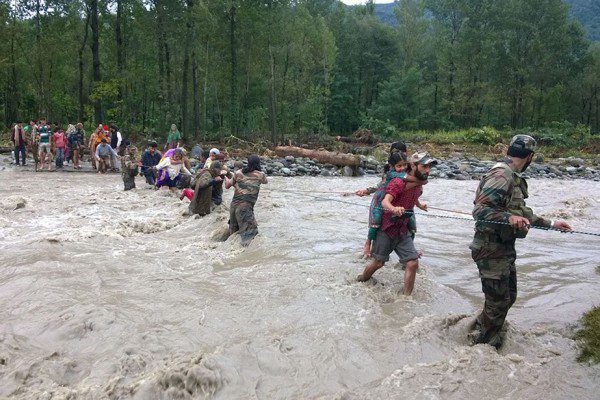Because the faculty of sight is continuous, because visual categories (red, yellow, dark, thick, thin) remain constant, and because so many things appear to remain in place, one tends to forget that the visual is always the result of an unrepeatable, momentary encounter. Appearances, at any given moment, are a construction emerging from the debris of everything which has previously appeared. It is something like this that I understand in those words of Cezanne which so often come back to me: ‘One minute in life of the world is going by. Paint it as it is’ – John Berger (Drawn to That Moment)
Every woman sits on her own personal debris of everything that has previously appeared before her and paints that minute in the life of the world going by…each minute – a portrait of her relationship with the world – simultaneously personal and political, oppressed & rebellious, subtle and dramatic, banal and radical, inward and outward, everyday and historic. A woman’s perspective is always an infinite point perspective, because she inserts into all the rectilinear scenes, a set of parallel lines that are not parallel to any of the three axes of the scene, thus always creating a new vanishing point – a new morality, a new aesthetic, a new horizon and a new continuity.
I
“I will continue forever to write to you with my eyes.”
“I don’t paint dreams or nightmares…I paint my own reality”….
“I paint self-portraits because I am so often alone, because I am the person I know best.”…
“I paint flowers so they will not die.”…
“I am very uneasy about the enterprise of my paintings – especially because I want it to be useful to the Communist revolutionary movement. Until now I have painted only the expression of myself – honestly, but totally removed from the need for my paintings to serve the Party. I must fight with all my strength to turn what little positive energy my poor health has left me toward aiding the revolution. The only real reason for living.”…
Frida Kahlo, in her way of seeing – herself and the world around her, became the visual and existential consequence of a whole new narrative – a new narrative of pain that leapt with all its strength to seize light and poetry…a volcanic pain that exploded into blue flowers over the history and geography of Mexico, and of the rest of the world. In her, painting transformed into an inevitable symbol of liberation, an antidote from sickness, corsets, amputation – a magic-realist outpouring of a deep passionate love and enduring humanity.
Her eyes had trapped all the borders of the self and the world, all the flux, all the phantasmagoria of living at the meeting point of their brows…
“Why should I run…?”
There was this other woman, who sat on the debris of a world crumbling around her. I saw her first in a documentary film, Ram ke Naam by Anand Patwardhan. Amidst mad religious rioting, where people were killing each other, in the name of God, displacing each other, to make a temple for the God, she was sitting hunchbacked in her tiny house in a tiny village, over her cooking pots, trying to ward off the smoke that was filling her eyes. Then she turned towards the camera, wiped her eyes and said, “We aren’t allowed in the temples, so what good is the temple to us? If a temple’s idol breaks, various materials can be used to remake it, but if our people are cut into pieces, it’s not possible to repair them. Also, in this village, many people have their birth places, yet they are being evicted. In this very village, 150 hutments face eviction, on the other hand, there’s one Ram and for his birthplace, everyone’s so frantic, they’re running after it…why should I run?”…Babri Masjid was destroyed right after and hundreds and thousands of people killed each other in its aftermath.
That woman who saw and understood the simple truth and absurdity of all that surrounded her, had deep set eyes, nurtured by the lines and wrinkles surrounding it – with the kind of deep-rooted vitality, only inexhaustible history and struggle could invoke.
Eyes of a woman, set in time and poverty and human tragedy are torches, burning bright in the forest of life, infested with savage animals…
“The wheels kept turning…”
I was very young when my grandfather’s friends would come every evening to our house to discuss politics. They would discuss Karl Marx and Engels and Lenin and Stalin, as though they were leaders of some secret cult, whose every whim and fancy were their commands. And I would quickly hide myself behind the folds of my grandmother’s sari to hear mythological tales in hushed tones. No one was allowed to utter the word ‘God’ loudly in my household.
But my grandmother had not relented. She had kept all her rituals of prayer alive. She would wake up much before the sun or the birds did; almost in the middle of the night to run her fingers through her beads chanting the name of her Gods, while my grandfather slept. And thus I had grown, through ungodly days and godly nights… the days were cool, and crisp, full of adventure and the nights were cozy and warm, oppressively warm inside my grandmother’s sari.
My grandmother used to write a diary, which she would sometimes read out to me. There used to be long, much detailed entries about her travels, some of the details, so exasperating that she would just leaf through 10 pages in 10 seconds without missing much. One entry went on for about 15 pages, about a train journey, which crossed through hundreds of tunnels. It was as though someone had recorded the motion of the train, and in the absence of any other recording device, had recorded each turn of the wheel by pen on paper! “Tunnel no. 56…rumbling sound, darkness, light again…two gulmohar trees on either side, some bushes, tunnel no. 57…darkness again…its a long tunnel…finally I could see some light at the end, I wish it had gone on a little longer…tunnel 58…” and it would go on till tunnel no 576, not even one unaccounted!
There was an account of her and my grandfather riding on huge boats fashioned out of bottle gourds…I still search for those boats, on every lake and river I visit…
II
The above could be three instances of women looking at themselves and at the world, but in between them, and above and beyond them stretches an entire philosophical tradition of framing the world, which doesn’t just Ptolemize old paradigms but carries within itself the seeds of a true Copernican revolution; because each time a woman opens her eyes, she creates a new world of ideas, a new language, a different idiom – which is not some feminist utopia of the Sultana’s dream, but a world with true dialectics emerging from the real incorporation of both the male and the female gaze.
“Teri Aankhon mein to aakash ka failav nazar aata hai
Teri palkon mein to kshitijon ka jhukav nazar aata hai
Kis kinare se likhoon
Kis kinare se padhoon, tu hi bata
Teri koron mein to peeraon ka sailaab nazar aata hai…”
(In your eyes, I see the stretch of the skies
In your lashes, I see the bend of the horizons
Which shore do I start to write from
Which shore do I start to read, tell me, my love
I can see overflowing oceans of pain in the corners of your eyes…)
My grandfather wrote these lines looking into the eyes of the woman he loved…
The dialectical relation of the eyes of a woman with its world is complex, full of violence, voyeurism, love, oppression and many other things but always magical in its synthesis and transcendence…


